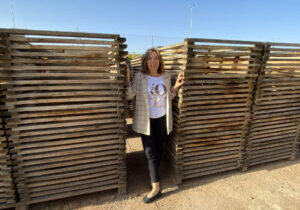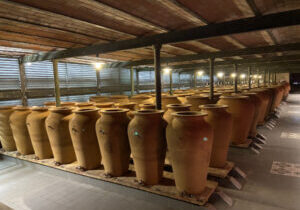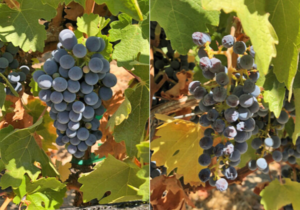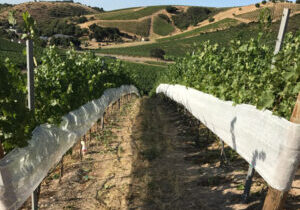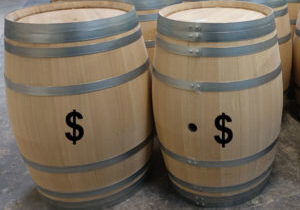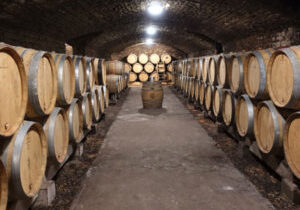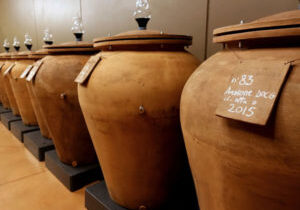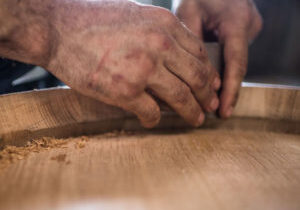You’ve just decided to buy an amphora – congrats! You’re in for a treat. Before you jump in though, it’s important to know the right questions to ask potential suppliers so you can make sure your wine is safe.
An amphora can allow for the purest expression of your grapes and vineyard. It can also be one of the safest and cleanest vessels for making wine. But, if you don’t go into it well-informed, you could put your wine at risk.
Have no fear, I'm going to provide you with all the tools you need to make the best decisions when choosing an amphora. I'll start with some fun stuff then get to the essentials of wine safety and micro-oxygenation. By the end, you should have only one question: why don't more people know about this? Well, we're hoping to change that.
Want to learn all about amphoras? Get your FREE eBook:
Your Guide to Amphoras
How natural can you get?
With the highest quality amphora and a good dose of skin contact (with the right grapes), it’s possible to go completely naked! In a very clean environment, lengthy skin contact allows for the following to occur:
- Extraction of all the characters, flavors and properties from the skins that would normally be missed.
- Anti-oxidant protection. Grape skins are full of anti-oxidants, so with 2-10 months of skin contact, many winemakers choose to go sulfur-free. The powerful oxygen-fighting properties allow the wine to age wonderfully in the bottle, and once opened, the wine could reveal itself for days.
Skin contact in an amphora
If you allow for skin contact and all the skins are broken, the skins will hang out at the smallest part of the vessel (top), and this seems to be a good balance for most winemakers. Balance of skin contact is slightly less than a like-sized barrel.
But if you prefer more skin contact than this, you can get a little creative. Maybe 100% whole berries are going to be too strong, but here’s what one winemaker in the Alto Adige does to get his “perfect balance" on a 100+ year-old-vine Pinot Blanc:
- The wine is aged on skins for four months in the amphora.
- 1/3 whole berries, 2/3 broken skins. This allows the strongest impact (whole berries) to be at the top, in the smallest part of the amphora, while the lesser impact broken skins will be at the middle section, the widest part.
- The winemaker is able to extract more great flavors from the skins than with the "standard" method yet still maintain a good balance in the wine.
Making sure your wine is safe
As with any vessel in which you’re aging wine, you want to know about the risk for contamination. Make sure you’re getting the highest quality amphoras possible. For one, you don’t want your amphora leaking, but most importantly, you don’t want it to ruin your wine or become a liability.
Lesser quality amphora producers will sell you a vessel made with the same material and under the same production process and fire temperature of the vessel used for flower pots. This is not OK. Make sure your amphoras are specifically made for wine and have been tested and certified to ensure there is no risk of contamination.
Here are some guidelines on the levels of cadmium and lead that are acceptable in U.S. products in contact with food and wine. The levels can vary greatly from one amphora to another, and not all amphora producers can provide you with detailed and reliable tests to support their statement of conformity. You do not want to compromise on this one.
 (chart courtesy of TAVA)
(chart courtesy of TAVA)
What are some other types of contaminants?
Colors and stabilizers could potentially be bad for your wine. We just don’t know because they all haven’t been tested yet. If all the amphoras from one producer look homogenous – same color, same smooth texture, etc. – colors and stabilizers have been used. Until these products have been proved harmless, why take a chance?
Ask about the material
I was at Vinitech November 2018 and found a couple exhibitors with amphoras. I asked one about the material of the amphoras and was told they were made of “sandstone from China.”
Clay is the preferred material because it can be purer and there is more control over porosity than other materials. It’s not that important to know the exact recipe of the clay mixture or specific town from which it came. But knowing the producer is based somewhat close to the origin (on the same continent perhaps!) can be reassuring.
Also, see if the producer can tell you the reason for using a particular mixture. For example, is it specifically used for amphoras that hold wine?
How much oxygen will your wine get from the amphora?
It’s currently impossible for an amphora producer to tell you exactly how much micro-oxygenation you’ll get with an amphora, but you could find out a range. And if the producer is willing to put that range in writing, even better.
A lot of people choose amphoras because they want a similar level of micro-oxygenation to that of a new barrel but without the wood/toast flavors. Per my recent blog post, Latest Research on Oxygen and Wine Barrels (in mostly plain English), the Oxygen Transfer Rate for American oak barrels is 11 mg/liter per year and for French oak barrels, it’s 8 mg/liter per year. Let’s say an average of 10 mg/liter per year, which means less than 1 mg/liter per month.
One amphora producer from Italy, TAVA, says its standard amphora has a micro-oxygenation level similar to that of a new barrel. The range is .5 – 1.5 mg/liter per month, which is actually very precise. TAVA also has the flexibility to adjust this range according to the customer’s needs, providing up to 10 mg/liter per month of micro-oxygenation if requested. This is possible because of the particular blend of clay developed by TAVA for wine amphoras together with very precise and controlled high-temperature firing.
When comparing amphora to barrel, it’s good to understand the pattern of oxygen transfer. With wood, 50% of the annual oxygen transfer is released into the wine in the first 2-4 months and then slows down. With an amphora, micro-oxygenation is more linear and stable throughout the year.
Furthermore, the amphoras are proven to be more linear throughout their lifetime. If cleaned properly, they will maintain a roughly similar level of micro-oxygenation year after year, thus reducing the marginal cost of your investment per liter.
When will more information be available?
Hopefully within the next few months. The producer mentioned above, TAVA, has been actively performing studies with renowned labs throughout Europe as well as independent consulting firms. The goal is to discover the following:
- New micro-oxygen measuring protocols in clay containers. The hope is to standardize measurements among producers, so when winemakers ask the right questions and receive data about various amphoras, they can compare apples to apples.
- Contamination effects of clay containers in an acid environment for 36 elements. TAVA wants to expand the scope of testing so all amphora producers will be held to a higher standard.
- New natural cleaning methods for clay containers.
Hopefully instead of feeling overwhelmed by all this information, you’ll feel more at ease about putting your wine in an amphora. By knowing the right questions to ask, you can make the best choices and put your mind at ease. Then you get to just focus on having fun with your cool new toy!

